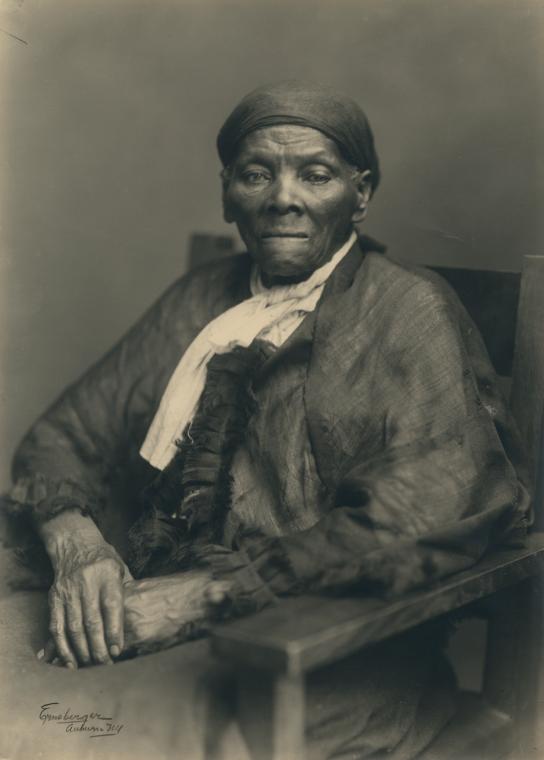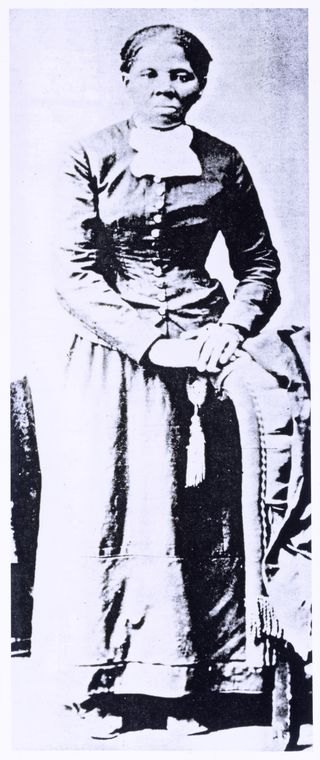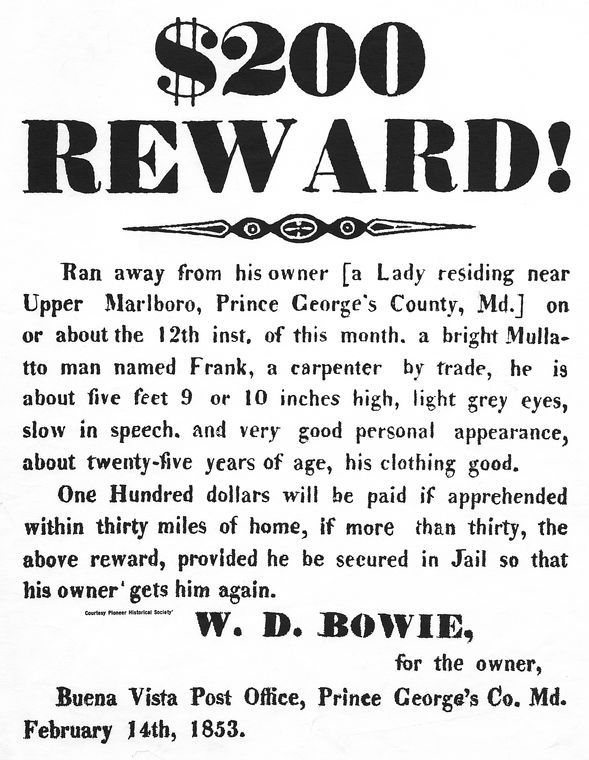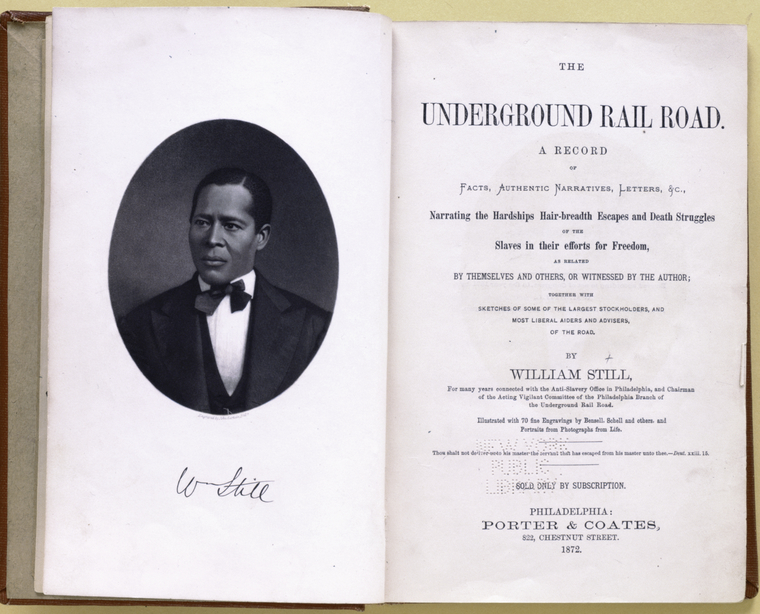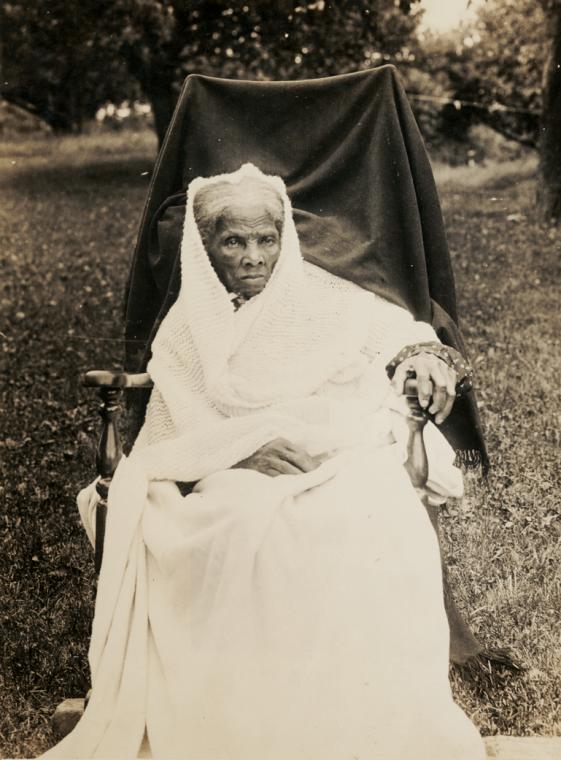Harriet Tubman: Death or Liberty
"There are two things I’ve got a right to, and these are, Death or Liberty – one or the other I mean to have. No one will take me back alive; I shall fight for my liberty, and when the time has come for me to go, the Lord will let them kill me." - Scenes in the Life of Harriet Tubman by Sarah Hopkins Bradford
Most kids hear about Harriet Tubman while in school, as part of the curriculum on slavery in America. We learn of a woman nicknamed "Moses", after the biblical figure, who led hundreds of enslaved African Americans to freedom.
In recent years Harriet Tubman made history again, although for an entirely different reason. In April 2016, Secretary of the Treasury Jacob Lew announced that Tubman will be replacing Andrew Jackson on the $20 bill.
This is significant because she will be the first woman and first African American to appear on United States currency. While she has become a very well known figure, there is more to her story than what we are usually taught.
Early Life
Born Araminta Ross in 1820 Maryland, Tubman was one of eight children. Her parents, Benjamin Ross and Harriet Green, were full-blooded Africans and believed to belong to the Ashanti tribe of West Africa, known for being warriors. Though most of her siblings were sold, Araminta managed to stay with her parents for much of her young life. By the time the prospect of being sold did come up, the owner of her family, Edward Brodas, died.
It was during this time that Araminta discovered she was, in fact, free—her mother had been freed by a previous owner but was never told. However, Araminta never pursued the issue because a lawyer informed her too much time had passed and her freedom wouldn't be upheld in court. (source: Biography in Context)
When she reached adulthood, Araminta decided to take her mother's name, Harriet. She also married a free man named John Tubman around this time, hence 'Harriet Tubman' was born.
Despite being married to someone free, Mrs. Tubman still retained her slave status. She was "rented" out to another owner who did allow her to work away from his plantation for a price of $50 a year. Around 1849, two of Harriet's brothers heard they were all likely to be sold into the Deep South as part of the domestic slave trade, during which slaves were often sold into territories as areas were settled and labor was needed. Fearing an even worse way of life, Mrs. Tubman and her brothers ran away.
A reward of $300 was issued for their return (an example of such a notice is pictured at right). Fearing repercussions, Mrs. Tubman's brothers returned within a few days; Mrs. Tubman, not feeling safe, decided to leave for good. For unknown reasons, her husband did not join her, yet she made it to Philadelphia (a center of abolitionist activity) via the Underground Railroad. (source: African American Experience)
Work with The Underground Railroad
The Underground Railroad was the name for the network of escape routes for slaves, the people who helped them, and the system itself which was loosely organized in the beginning. Through this "railroad", thousands of enslaved Americans were able to make their way to Canada and northern states of the U.S. in the years before the Civil War. The exact year in which the system began is unknown, but it is believed the Quakers started it in 1787. By the time Mrs. Tubman made her escape in 1849, escape via the Underground Railroad had become a frequent practice and it involved a much larger network of people. (source: African American Experience)
Unfortunately, in 1850, Congress passed the Fugitive Slave Act which made the northern states just as dangerous as the South. The law made it possible for the testimony of any white person to be used as a means of sending any black person, free or not, to the South and into slavery.
For this reason, Mrs. Tubman began visiting the Philadelphia Vigilance Committee, an organization formed by James Miller McKim and William Still, to help fugitive slaves. Still kept careful records of those who passed through the committee's office and published them in 1872 as The Underground Rail Road. Through this group, Harriet began her role as a "conductor" on the railroad. By 1857, she had helped free dozens of slaves (not the hundreds often touted in history books; Tubman believed the figure was closer to 70), including her own parents and other family members. In later years, Tubman would remark with pride that she never lost a passenger and never lost her way. (source: Biography in Context)
Civil War Service
Though most famous for her role in the Underground Railroad, Mrs. Tubman also had another, equally important role: unofficial military servicewoman! During the Civil War, she assisted the Union Army as a nurse, scout, teacher, and guide. After the passing of the Emanicipation Proclamation, she played yet another important role, helping slaves relocate. Most were moved to contraband camps, which were originally established to provide shelter to fugitive slaves during the Civil War, but continued as a refuge after the law was passed to abolish slavery. Mrs. Tubman would later servce as a nurse and teacher to many of the Gullah people, slaves who had been abandoned in South Carolina's Sea Islands. (source: African American Experience)
Mrs. Tubman's experience leading slaves through the Underground Railroad came in handy during the Civil War when the Union Army requested her assistance with scouting expeditions. Working with groups of former slaves, she hunted down enemy camps and reported on the movements of Confederate troops. Her most important task came to a head in July of 1863: At that time, she accompanied Colonel James Montgomery and about 150 black, soldiers to raid a gunboat on the Combahee River in South Carolina. The purpose of the raid was to liberate slaves who were either unable or too scared to find their way to Union lines. Inside information procured by Tubman enabled the Union gunboats to surprise the rebel forces. (source: Library of Congress)
Mrs. Tubman's execution of this raid is important not only because it yielded such great success, but also because she was a woman, a civilian, and a former slave who managed to orchestrate and carry out a full-scale military operation alongside decorated officers. She wasn't familiar with the South Carolina territory so, to implement her plan, she had to use her wits and the help of others familiar with the area. Mrs. Tubman recruited scouts from nearby camps of freed slaves to help gather intelligence, knowing that, as an outsider, it would be difficult for her to gain the trust of the slaves because she was from a different area and did not speak the Gullah language of people located there. (source: New York Times)
Once the operation had enough information to proceed, they pulled ashore at night, only to be met by fire from slave owners and Confederate soldiers who discovered their plans. Despite this, they still were able to liberate more than 700 slaves, only increasing Tubman's legendary status.
She went on to work similar missions with the famed Massachusetts 54th Infantry (the first military unit consisting of black soldiers raised in the North) and spent the final years of the war tending injured soldiers. In the 1970s, a black feminist organization known as the Combahee River Collective named themselves after the raid in honor of Mrs. Tubman's brave work. (Source: America: History and Life)
After the Civil War, Mrs. Tubman settled in Auburn, New York with her parents. While there, she continued to be an important force, fighting for racial justice as well as women's rights. She was a featured speaker at the National Association of Colored Women's inaugural meeting, where she was introduced as "Mother Harriet". She was a huge supporter of women gaining the right to vote and was known to work alongside such greats as Susan B. Anthony.
Later Years
Wanting to fulfill another dream of founding a home for the aged and poor, Mrs. Tubman bought 25 acres of land, deeded the land to the African Methodist Episcopal Zion Church, and established the Harriet Tubman Home for Aged and Indigent Negroes. (Source: Biography in Context)
During this time, Mrs. Tubman also managed to work on an autobiography with writer Sarah Bradford, originally called "Scenes in the Life of Harriet Tubman" (it is in the Library collection with the more recent title, Harriet Tubman, the Moses of Her People). She remarried in 1869, after finding out her husband had done so already, to a Civil War veteran named Nelson Davis. Although younger than his wife, Davis passed in 1888.
Tubman continued to show her tenacity by living to the age of 93, dying on March 10, 1913 from pneumonia. She spent the last two years of her life living in the very home she created to help others less fortunate. Although she was never properly acknowledged for her extensive military service, Mrs. Tubman was given a military funeral service by the Civil War Veterans of Auburn.
Harriet Tubman proved herself as not just a person of great character but also a humanitarian who tirelessly worked for the greater good. Whether it was for African Americans or women, she wasn't content living in a world that did not treat everyone equally. While there were many choices in the mix regarding which woman would ultimately be on the face of our currency, the one most representative of the the American spirit was surely the woman known as Moses.
Books for Kids
Harriet Tubman by Marion Dane Bauer
Harriet Tubman: A Woman of Courage by Time for Kids
Harriet Tubman: Riding the Freedom Train by Rose Blue & Corinne J. Naden
Harriet Tubman: Leading the Way to Freedom by Laurie Calkhoven
Books for Adults
Harriet Tubman : Imagining a Life by Beverly Lowry
Harriet Tubman: The Road to Freedom by Catherine Clinton
Harriet Tubman; the Moses of Her People by Sarah Bradford
Bound for the Promised Land: Harriet Tubman, Portrait of an American Hero by Kate Clifford Larson
Historical Databases
The African American Experience: Full-text digital resource exploring the history and culture of African Americans, as well as the greater Black Diaspora.
Slavery and Anti-Slavery: A Transnational Archive: A historical archive of several million cross-searchable pages of books, serials, supreme court records and briefs, and key manuscript collections from the United States, Great Britain, and France, concerning debates of slavery and abolition, the Transatlantic Slave Trade, the Institution of Slavery, and the Age of Emancipation. Provides a context for further research through links to chronology, biographies, bibliographies, and websites.
African American Newspapers, 1827-1998: Hundreds of U.S. newspapers chronicling a century and a half of the African American experience from more than 35 states. A collection feature of America's Historical Newspapers.
America: History and Life with Full Text: Indexes the scholarly literature of the history and culture of the United States and Canada, from prehistory to the present. With full-text coverage of hundreds of journals and books, and selective indexing for journals dating back nearly 60 years.
Other Resources
"Harriet Tubman Ousts Andrew Jackson in Change for a $20", New York Times
Harriet Tubman Historical Society
"Harriet Tubman: Former slave who risked all to save others", BBC News
"Harriet Tubman; Civil War Spy, Daring Soldier", Liberty Letters
"Harriet Tubman's Great Raid" New York Times
"Harriet Tubman's Daring Raid, 150 Years Ago", History
Want to know more about the man Tubman almost replaced on the $10 bill? Check out my post on Alexander Hamilton.
Read E-Books with SimplyE
 With your library card, it's easier than ever to choose from more than 300,000 e-books on SimplyE, The New York Public Library's free e-reader app. Gain access to digital resources for all ages, including e-books, audiobooks, databases, and more.
With your library card, it's easier than ever to choose from more than 300,000 e-books on SimplyE, The New York Public Library's free e-reader app. Gain access to digital resources for all ages, including e-books, audiobooks, databases, and more.
If you don’t have an NYPL library card, New York State residents can apply for a digital card online or through SimplyE (available on the App Store or Google Play).
Need more help? Read our guide to using SimplyE.
